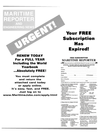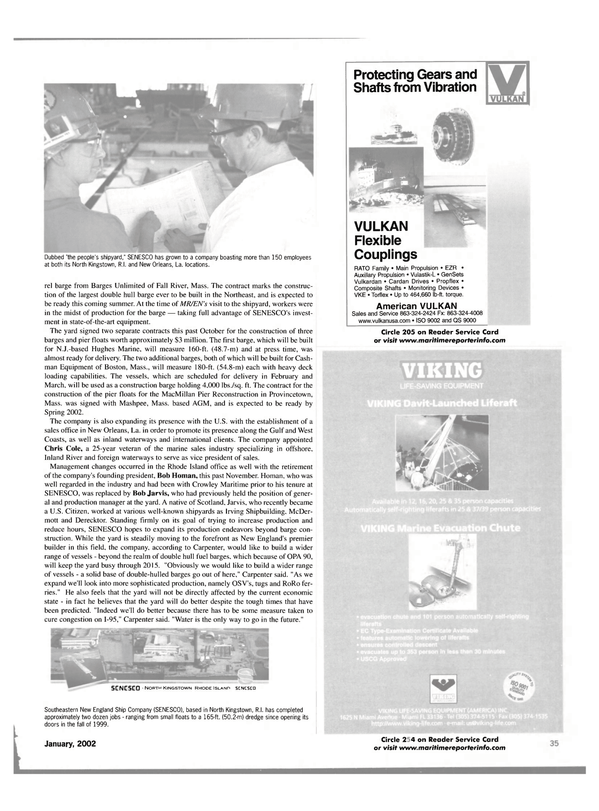
Safer Sea Passages
A new system, developed to reduce risk for cargo and hull damage, has proven to secure safer and more efficient sea passages for ships and cargo.
Seaware Onboard is designed as a user friendly sea keeping guidance system with the intention to give ample warning when risk occurs for cargo and hull damage. The system is designed for on-line use during sea passages, and can also be used during pre-voyage route planning.
Seaware Onboard was developed by Sweden's Seaware AB, formed by a group of postgraduate researchers from the Institution of Naval Architecture at the Royal Institute of Technology in Stockholm. A joint project regarding further development of the system for reefer vessels was started together with Cool Carriers, nowadays LauritzenCool, in 1998.
After extensive demo testing, a decision was taken to proceed with full-scale test during three voyages on board the reefer vessel M/V Ivory Dawn. The test was carried out in the first months of 2001. The outcome of the test can be regarded as positive.
The Seaware Onboard system can assist to secure the safe and efficient passage for ship and cargo. The Master and Navigation Officers involved in operation of the system during the test runs were given questionnaires upon ending the trail period.
Seaware Onboard is a computer based decision support system for rationally based risk assessment and route planning, providing support on sea keeping: • Automatic, continuous information on sea state and various wave-induced effects • Warning functionality based on forecasts; • Advice on heavy weather maneuvering; • Route planning facility; • Continuous recording of ships dynamic behavior and performance.
A built in weather routing tool gives a unique possibility to greatly reduce the operating cost and improve time efficiency for the vessel based on weather prognosis from a weather bureau. The ship's command has the possibility to investigate the implications on ship performance and dynamics resulting from alternative routes and/or engine settings.
During sea passages, the system continuously evaluates the present sea condition based on measurements of the motions of the vessel. This is followed by predictions of the resulting dynamic effects for the near future. The system will detect undesired or dangerous situations well in advance. The Master/Navigation Officer can also investigate the implications of altering course and/or speed.
Circle 47 on Reader Service Card www.maritimereporterinfo.com
Read Safer Sea Passages in Pdf, Flash or Html5 edition of January 2002 Maritime Reporter
Other stories from January 2002 issue
Content
- Competition for Princess Cruises Heats Up With Arison Entry page: 4
- Fincantieri to Build Liner For British Market page: 8
- Stolt Offshore Announces $110 Million Contract Award page: 10
- HAL Details Delivery of New Ships page: 11
- Nichols Brothers Delivers Catamaran page: 12
- Launching, Double Christening At Flender Werft page: 12
- Kvaerner Delivers Carnival Pride page: 12
- S G Brown Launches Lightweight Marine VDR page: 13
- Entry of the Titans Delayed page: 18
- EU Ministers Fail To Agree On Shipbuilding Aid page: 20
- Seastreak Launches M/V Seastreak New Jersey page: 23
- OTAL To Invest $5 million in New IT System page: 24
- Money Talks page: 27
- Happy Birthday Navy page: 29
- Teams Prep For DD(X) Challenge page: 30
- Surface Combatants Benefit from Northrop Grumman Research page: 31
- GE LM2500s Slated For Norwegian Frigates page: 31
- Navy Honors Engineering Pioneer page: 32
- SENESCO -The People's Shipyard page: 34
- Integrated Bridge Allows Cutting Edge Design page: 36
- Safer Sea Passages page: 38
- Bridge of the Future page: 41
- Australia is a Tough Testing Ground for Marine equipment page: 42
- The Cat Completes Record Canada-Australia Passage page: 44
- Wartsila EnviroEngines For P&O Princess Cruises page: 45
- Thrustmaster Adds New Personnel page: 45
- Creating a Portable Dynamic Positioning System page: 46
- The Marine Engine Elixir page: 46
- RoPax Propulsion Concept Proves Efficient page: 47
- RK280: Cutting A New Path page: 48
- World's First Full Mission Diesel Electric Simulator Debuts page: 49
- Hagglunds Drives Makes Major Changes page: 49
- Cove Point LNG Proposal Under Review page: 50


